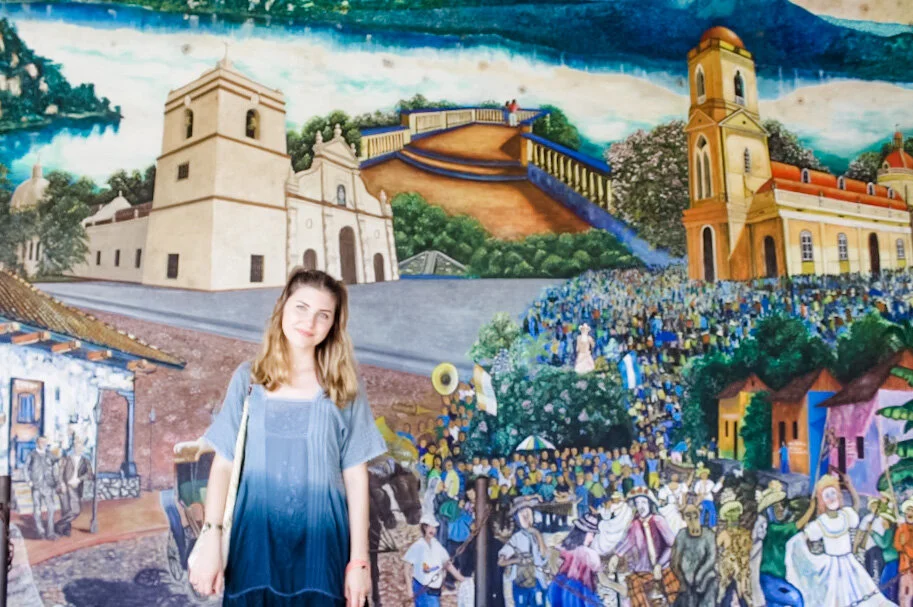Mandarin Through Stories: The Fresh Prince of B-612
The Spring I term’s Beginner IV Chinese class is one of LanGo’s longest-running classes, dating all the way back to Fall 2018. In the early stages of the study of Chinese, our focus has to be on acquiring vocabulary and keeping it present in our minds with regular review. One of our principal textbooks has been Professor Zhang’s Modern Textbook of a Thousand Characters, which consists of 50 finely crafted single-sentence lessons each introducing 20-30 new characters, covering a grand total of 1,234. We are now about halfway through this text, and I find it has so far given good coverage of the most frequently occurring words.
Aside from two or three Chinese-language songs that this class has studied and listened to, one of our favorite supplementary texts has been a Chinese-language abridged retelling of The Little Prince, by the French pilot and author Antoine de Saint-Exupéry (translated by 崔恩圭 [Cui Engui], Hong Kong 2005). This edition is designed for young Chinese-speaking children. The text is in traditional characters without phonetic transcription, but the section headings include transliteration in the Zhuyin system (also called “Bopomofo”), to help beginning learners sound out the syllables.
Our edition adds a preface not included in the original work, which invites us to imagine crash-landing in a desert. (This is an allusion to the real life of de Saint-Exupéry, who wrote about his experience in part II of The Little Prince and elsewhere. As it happens, my French student Larry and I read one such piece last year, in which the author wrote beautifully about how his brush with death led to feelings of love and brotherhood for all humanity. Hi Larry!)
A further alteration to the text is in the very first section, in which the narrator complains, Les grandes personnes ne comprennent jamais rien toutes seules, et c’est fatigant, pour les enfants, de toujours et toujours leur donner des explications--‘Grownups never understand anything on their own, and it is tiring for children to give them explanations forever and ever.’ Our translation omits this. My sense is that this sly inversion of the roles of adult and child, of the deceived versus the True Understander, clashes with the worldview the Chinese have traditionally preferred to instill in the young.
One challenge we’ve faced in this reading is the similarity of two recurring characters. One is in Mandarin read huà, which means ‘draw, paint’ (the verb) or ‘drawing, painting’ (the noun), and the other is shū, which means ‘book’ in the modern language (and used to be a verb ‘to write’). Take a close look and try to spot the difference:
Fig. 1. Two similar traditional characters, huà and shū.
The upper component common to both characters, 聿, comes from a depiction of a hand holding a vertical writing implement. This component occurs also in characters such as 律 ‘law’ and 筆 ‘writing brush.’ In the character huà on the left, the components 田 ‘field’ and a vertical line 一 are written below. The total stroke count is 12. Modern simplified forms, such as Japanese 画, omit the top half of the variant form 畵 entirely. This is the component ga in the term Manga ‘comic book,’ one of Japan’s most important cultural exports in recent decades; the Korean readings of this Hanja are 화 hwa and 획 hoek.
In the character shū on the right, the bottom component is 曰 ‘say, speak’ (yuē, radical No. 73, not the similar-looking ‘sun/day’ radical 日 rì, No. 74, see below; for a general introduction to the structure of Chinese characters see here). The simplified form of 書 used in the People’s Republic is one of the more arbitrary-seeming reductions: 书. It keeps the direction of the first two strokes as well as the vertical, and adds a dot to the top. This form is very likely rooted in calligraphic tradition. In Korean this Hanja is read as 서 seo, and in Japanese it is sho.
In the portion of 小王子 ‘The Little Prince’ we’ve read so far (小 xiǎo ‘small,’ 王 wáng ‘prince, sovereign,’ 子 zǐ ‘child,’ or toneless -zi, diminutive noun suffix), we’ve encountered one interesting example of a word getting lost and distorted in translation. Part V of the original describes trees called “baobabs” (found in Africa, Madagascar, Arabia, and Australia) engulfing an entire asteroid. Now the standard Chinese term for ‘baobab’ is, according to Wikipedia, 猴麵包樹, which literally means ‘monkey-bread tree,’ but this seems not to have been known to the translator of our edition. Instead our translator sought to represent the tree name phonetically--but instead of the expected transcription syllables bei-ou-ba-bu or ba-ou-ba-bu, we find on pages 14-15 “歐巴歐 ōu-bā-ōu” ! Somehow on the way from the original to our translation, the sequence ba-ou-ba (3 syllables with a repetition, pattern A-B-A) must have been misremembered as ou-ba-ou. It makes little difference to the story what this tree is called, but I find this a good example of one kind of mistake to be on guard against when transplanting something from one culture to another--all it takes is a momentary lapse and neglecting to double-check!
For our final project wrapping up the Spring I session, I asked Flor to record herself reading a passage aloud (pages 18-19). Great job, Flor!
The second part was a brief multiple-choice quiz I put together testing character recognition. One question is reproduced below.
Fig. 2. Multiple-choice question derived from 小王子 ‘The Little Prince’.
The intended syllable is indicated in square brackets, alongside the meaning of the sentence in English. The four choices listed all share a graphic component, 門 ‘the gate’ (option a). This word is read as mén in Mandarin (Korean 문 mun, Japanese mon). The correct choice in this exercise is (b), which has our gate component next to the ‘person’ radical ⺅(basic form: 人). This is the plural suffix -men, which is only added to pronouns and nouns denoting humans, like the noun 大人 ‘grownup’ (‘big’ + ‘person’) here. This character 們 is an example of a phono-semantic compound, which is the largest class of Chinese characters. In characters of this type, one component clues us in to the meaning (here ‘person,’ ⺅= 人) while the other component (here 門 mén) indicates the sound. As we were looking over the assessment, a mnemonic phrase for distinguishing these two characters came to mind: ‘Adding a person makes it plural.’ (This Chinese character arose relatively recently; Wiktionary lists Japanese and Korean readings for it, but you’re unlikely to encounter this one in a non-Chinese context.)
Let’s briefly examine the other two options. Option (c) 問 writes the word wèn ‘to ask,’ and this is also a phono-semantic compound: the phonetic cue is again 門 mén (sounds [m-] and [w-] often alternate in phonetic series like this), while the meaning component is 口 kǒu ‘the mouth.’ The Korean and Japanese readings (문 mun and mon, respectively) are homophonous with those for the basic character 門 (a). For some graphic cross-linguistic wordplay involving the character 問, see our recent blog post on ambigrams.
Option (d) 間 also contains the gate graph, but this combination is not a phono-semantic compound. It is read in Mandarin as jiān (1st tone) and as jiàn (4th), both with the meaning ‘interval’ (in Korean it is 간 gan [as in 시간 ‘time’], in Japanese ken or kan). The component added below the gate is 日 ‘sun/day,’ and both components are here for their meaning (rather than sound): the sun appearing in the space between two doors. (A derivative of this character is discussed in this early blog post on character simplification.)
To those of you who have learned some Chinese (or Korean, Japanese, or French), I hope you’ve found this a useful review, or have learned something new; and to those who haven’t yet, I hope this small taste of what learning Chinese is like may inspire and encourage you to learn a bit more of this wonderfully rich and rewarding language! Check out our other blog posts and follow us on Facebook, Instagram, Twitter, and Tinycards. 再見 zàijiàn!


































Tools for helping you master some of the trickier points of German grammar, whether you’re learning it for the first time or wanting to review the fundamentals. Los geht’s!